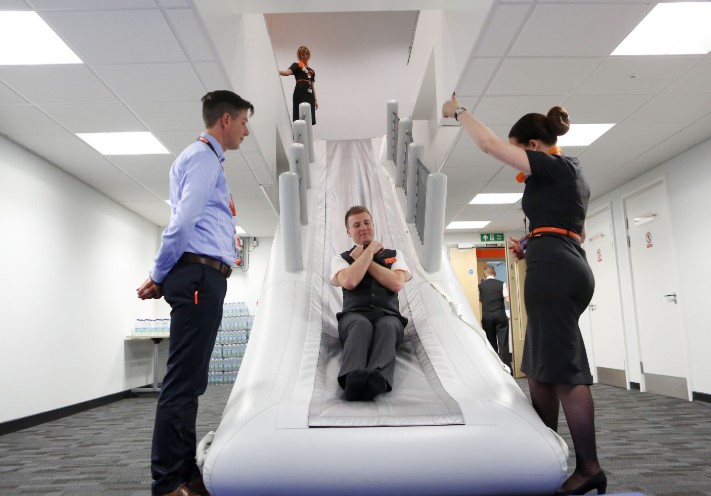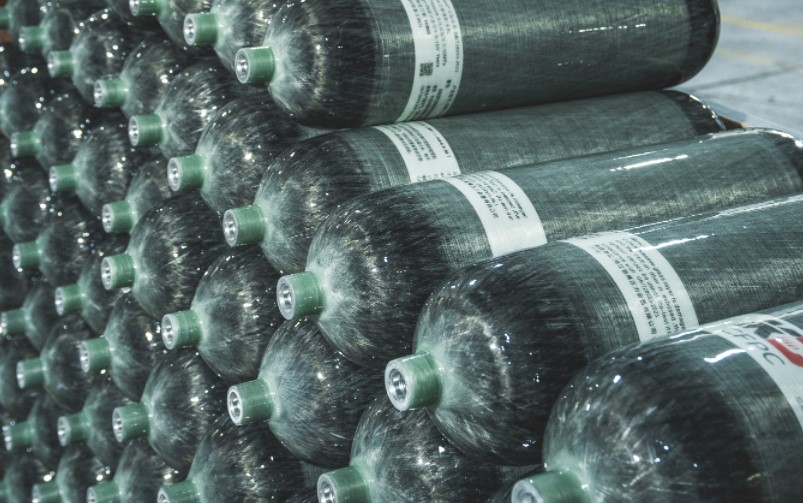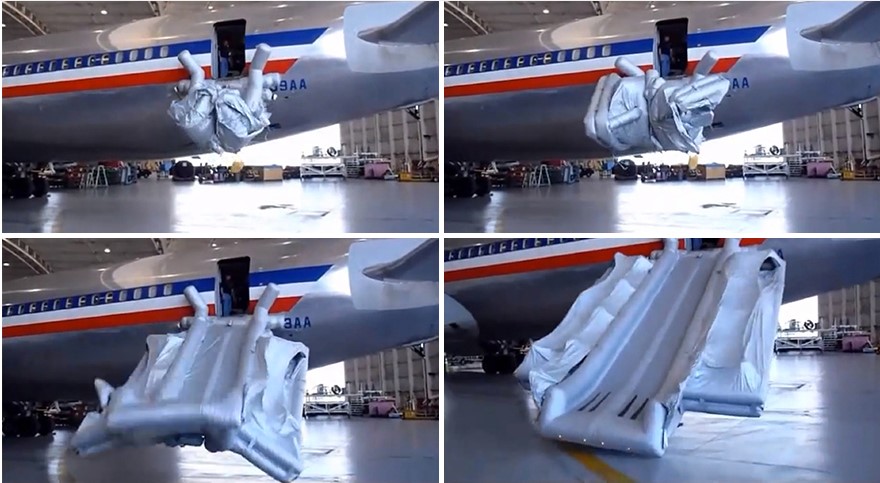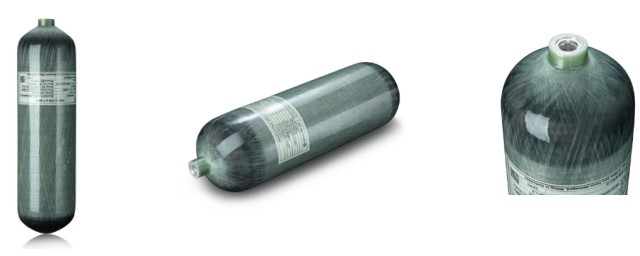In the aviation industry, safety is paramount. Aircraft evacuation systems, such as emergency slides, play a critical role in ensuring passengers and crew can exit the plane quickly and safely during emergencies. One of the key components enabling these systems to work efficiently is the air cylinder used to deploy the slides. Recently, carbon fiber air cylinders have emerged as the preferred choice for such systems. Their lightweight nature and durability make them ideal for this application, offering significant advantages over traditional materials.
Understanding Emergency Slide Systems
Emergency slides are inflatable devices that deploy rapidly to assist in the evacuation of passengers during emergencies. These slides are powered by compressed gas stored in air cylinders. When triggered, the cylinder releases high-pressure gas, inflating the slide in seconds. For the system to work flawlessly, the cylinder must be reliable, lightweight, and able to withstand high pressures and demanding conditions.
Why Carbon Fiber Cylinders?
Carbon fiber composite cylinders are engineered to meet the specific demands of critical applications, including aviation evacuation systems. Here are the reasons they excel in this field:
1. Lightweight Design
Weight reduction is a priority in aviation, as every kilogram saved contributes to improved fuel efficiency and reduced operating costs. Carbon fiber cylinders are significantly lighter than traditional steel cylinders. This makes them an excellent choice for emergency slides, where reducing the weight of onboard safety equipment can improve overall aircraft performance.
2. High Strength-to-Weight Ratio
Despite their light weight, carbon fiber cylinders are incredibly strong. The composite material can withstand high-pressure environments, ensuring the cylinder holds compressed gas securely and reliably. This durability is essential for emergency slide systems, where failure is not an option.
3. Corrosion Resistance
Aircraft are exposed to a variety of environmental conditions, including humidity, temperature fluctuations, and even salt in coastal regions. Traditional steel cylinders are prone to corrosion over time, which can compromise their structural integrity. Carbon fiber cylinders are inherently resistant to corrosion, making them more reliable and long-lasting.
4. Compact and Efficient Design
The reduced weight and increased strength of carbon fiber allow for compact designs. This means cylinders can fit more easily into tight spaces, an essential consideration in aircraft where space is at a premium.
5. Ease of Maintenance
Carbon fiber cylinders require less maintenance compared to traditional materials. Their resistance to wear and tear ensures that they remain operational for extended periods, reducing the frequency of inspections and replacements.
The Role of Carbon Fiber Cylinders in Safety
Safety is the top priority for aircraft evacuation systems. Carbon fiber cylinders contribute to this by providing:
- Reliable Performance Under Pressure
Emergency slide cylinders must deploy instantly, often in extreme conditions. Carbon fiber’s durability ensures that the gas release mechanism functions without fail. - Compliance with Safety Standards
Aviation regulations demand strict adherence to safety and performance standards. Carbon fiber cylinders are designed to meet or exceed these standards, ensuring they are fit for use in critical safety systems. - Reduced Risk of Failure
Traditional cylinders, especially older models, are more susceptible to material fatigue and damage. Carbon fiber’s strength and resistance to environmental factors reduce the likelihood of failure, ensuring the slide deploys correctly when needed.
Environmental and Economic Benefits
Using carbon fiber cylinders also aligns with broader industry goals for sustainability and cost efficiency.
- Fuel Efficiency
The lightweight nature of carbon fiber cylinders contributes to overall weight reduction in aircraft, improving fuel efficiency and lowering greenhouse gas emissions. - Longer Lifespan
The durability of carbon fiber cylinders means they have a longer service life compared to traditional materials. This reduces the need for frequent replacements, cutting costs over time. - Recyclability
Advances in recycling technologies have made it possible to reuse carbon fiber materials, further enhancing their environmental benefits.
Conclusion
Carbon fiber air cylinders represent a significant advancement in aviation safety technology. Their lightweight, durable, and corrosion-resistant properties make them ideal for use in emergency evacuation systems, where reliability and efficiency are critical. By incorporating carbon fiber cylinders into aircraft designs, manufacturers and operators can enhance safety, reduce weight, and achieve long-term cost savings.
As aviation continues to evolve, the use of innovative materials like carbon fiber will play a vital role in ensuring the safety and efficiency of air travel. For emergency slide systems, this means faster, more reliable deployment during emergencies—ultimately saving lives.
Post time: Nov-22-2024




